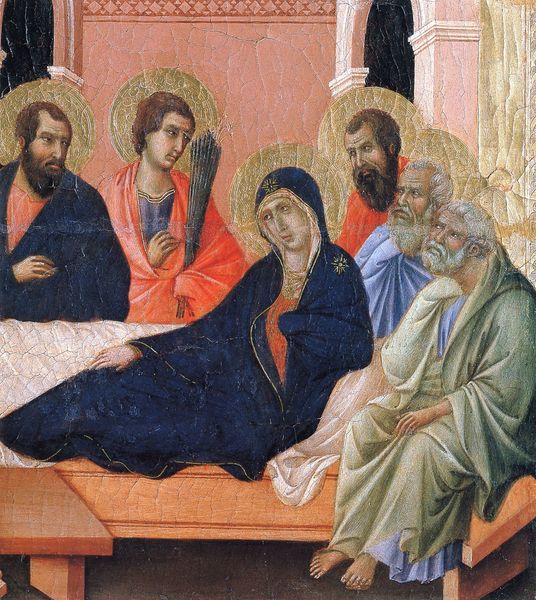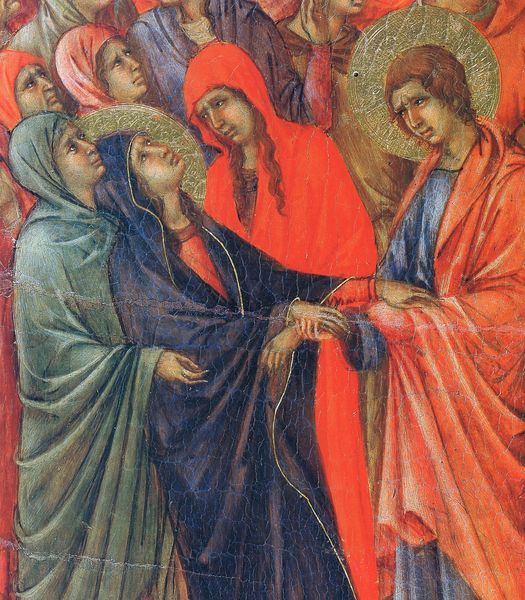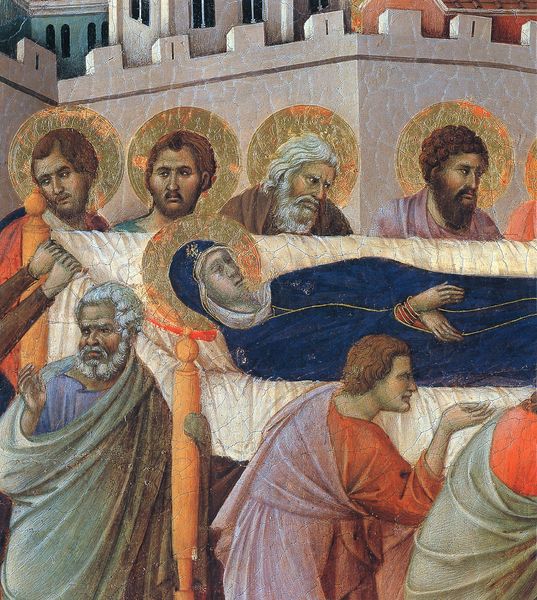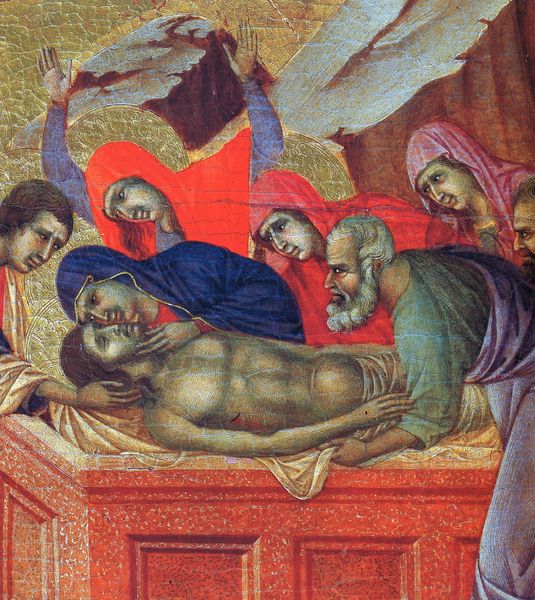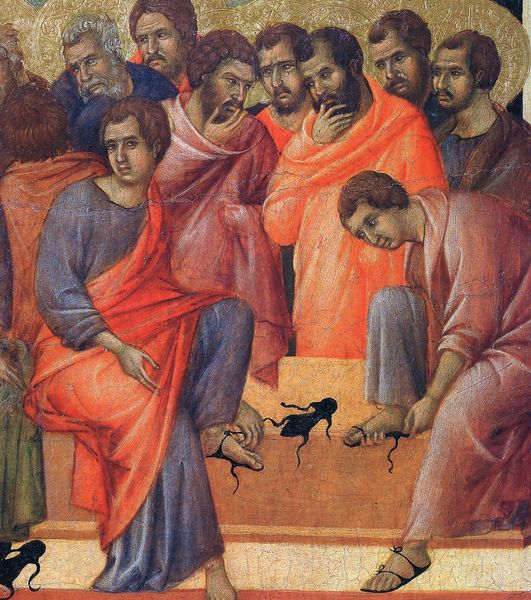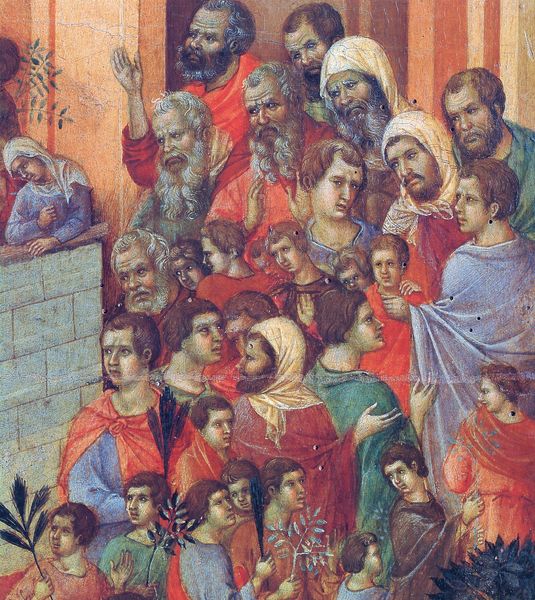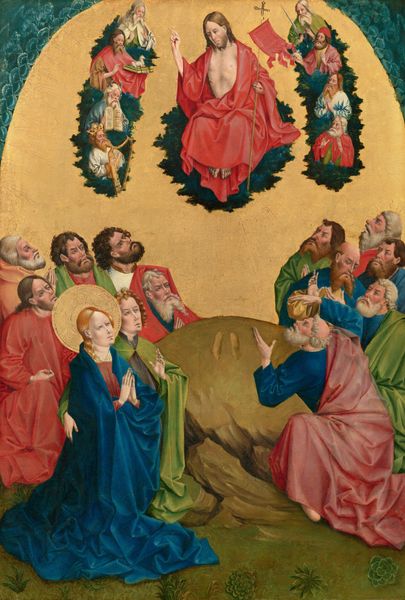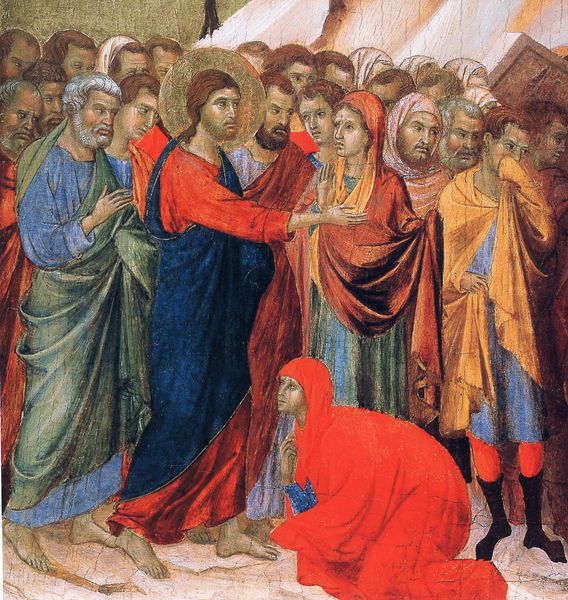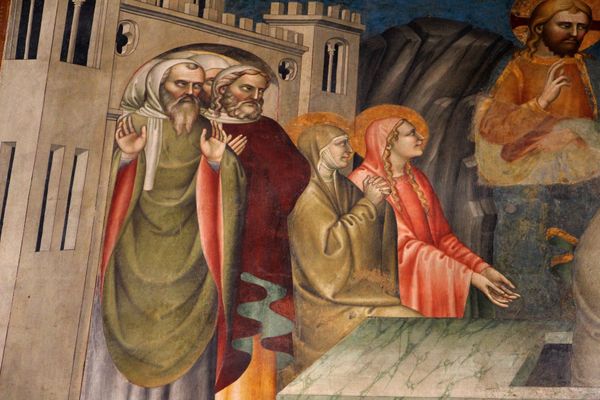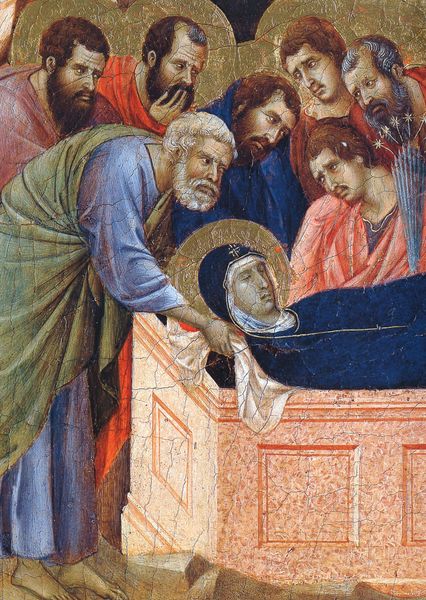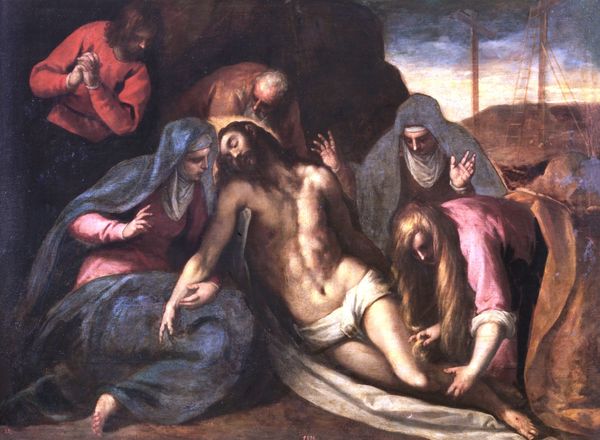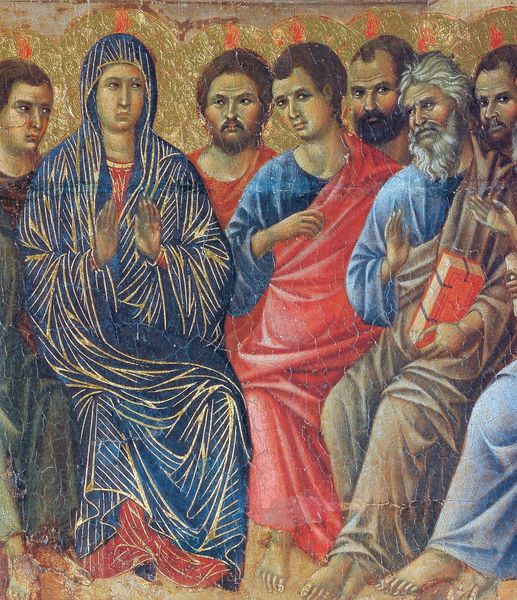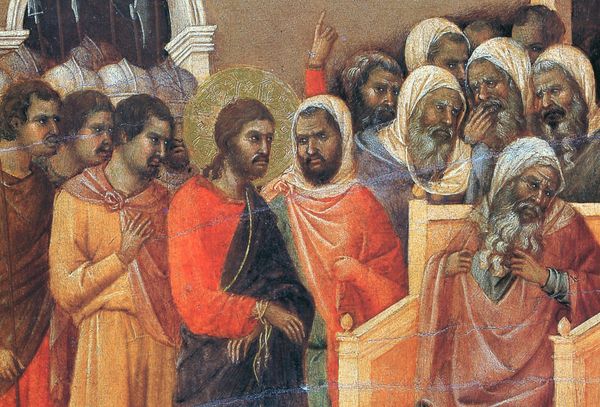
tempera, painting
#
medieval
#
tempera
#
painting
#
prophet
#
sienese-school
#
figuration
#
oil painting
#
group-portraits
#
christianity
#
history-painting
#
italian-renaissance
#
christ
Copyright: Public domain
Curator: I find myself drawn to the composition – all those sleeping figures almost forming a tapestry of robes and faces. There’s a quiet melancholy, wouldn’t you agree? Editor: Yes, it’s strikingly still, despite the underlying tension. What we have here is a fragment of Duccio’s “Agony in the Garden,” executed in tempera around 1311. It depicts the apostles sleeping while Christ prays before his betrayal. It’s important to understand this piece was part of a larger, multi-panel altarpiece, the Maesta. Curator: Precisely. And isolating this fragment reveals so much. Note the intricate use of colour to denote depth – how the overlapping robes create a sense of spatial complexity. Duccio uses subtle shifts in tone to differentiate the figures while still unifying them as a collective of dreamers. I find the treatment of the gold halos especially intriguing, framing the figures almost like individual icons within the larger narrative. Editor: Contextually, Duccio was working during a period of intense political and religious fervor in Siena. The Maesta was commissioned for the Siena Cathedral, a significant civic and spiritual symbol. The placement of this image within the altarpiece and, subsequently, the Cathedral would have underscored the vulnerability of Christ and his followers during a time of social unrest. The sleeping apostles can even symbolize the church's failings during these trials. Curator: An astute observation. I would add that the work transcends mere representation. It engages in a profound meditation on faith, human fallibility, and sacrifice through skillful design and color theory. The artist uses the space to create tension. Editor: It certainly exemplifies the role art plays in shaping our understanding of historical events, conveying both the spiritual and societal anxieties of the time. These aren't just figures; they represent the socio-political milieu that Duccio navigated, each element imbued with significance, meant to teach as much as inspire devotion. Curator: The conversation underscores how studying art isn’t only about its immediate aesthetics but how those aesthetics interact with culture, offering a rich sensory experience that we, as art consumers, become co-creators of. Editor: Precisely; and I find this deep dive into the cultural milieu that created this work reminds me of the incredible power art can have to communicate beyond words and time.
Comments
No comments
Be the first to comment and join the conversation on the ultimate creative platform.
